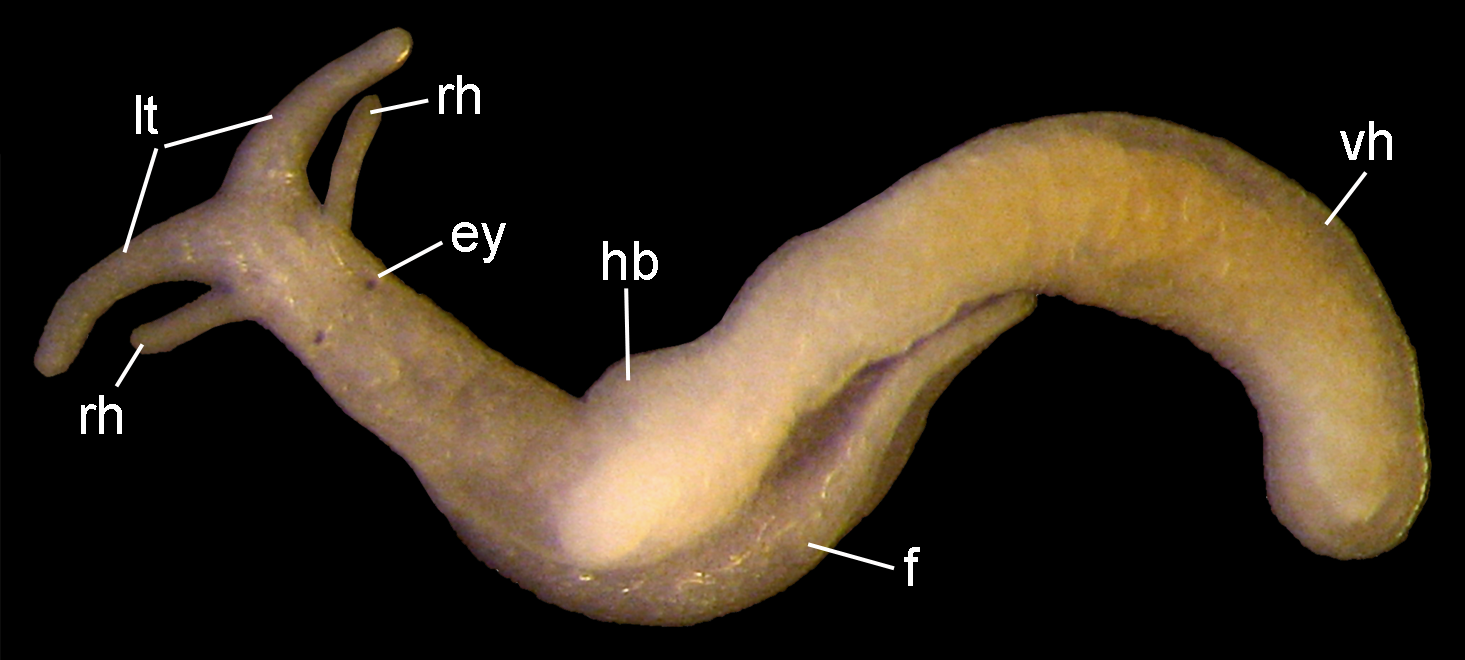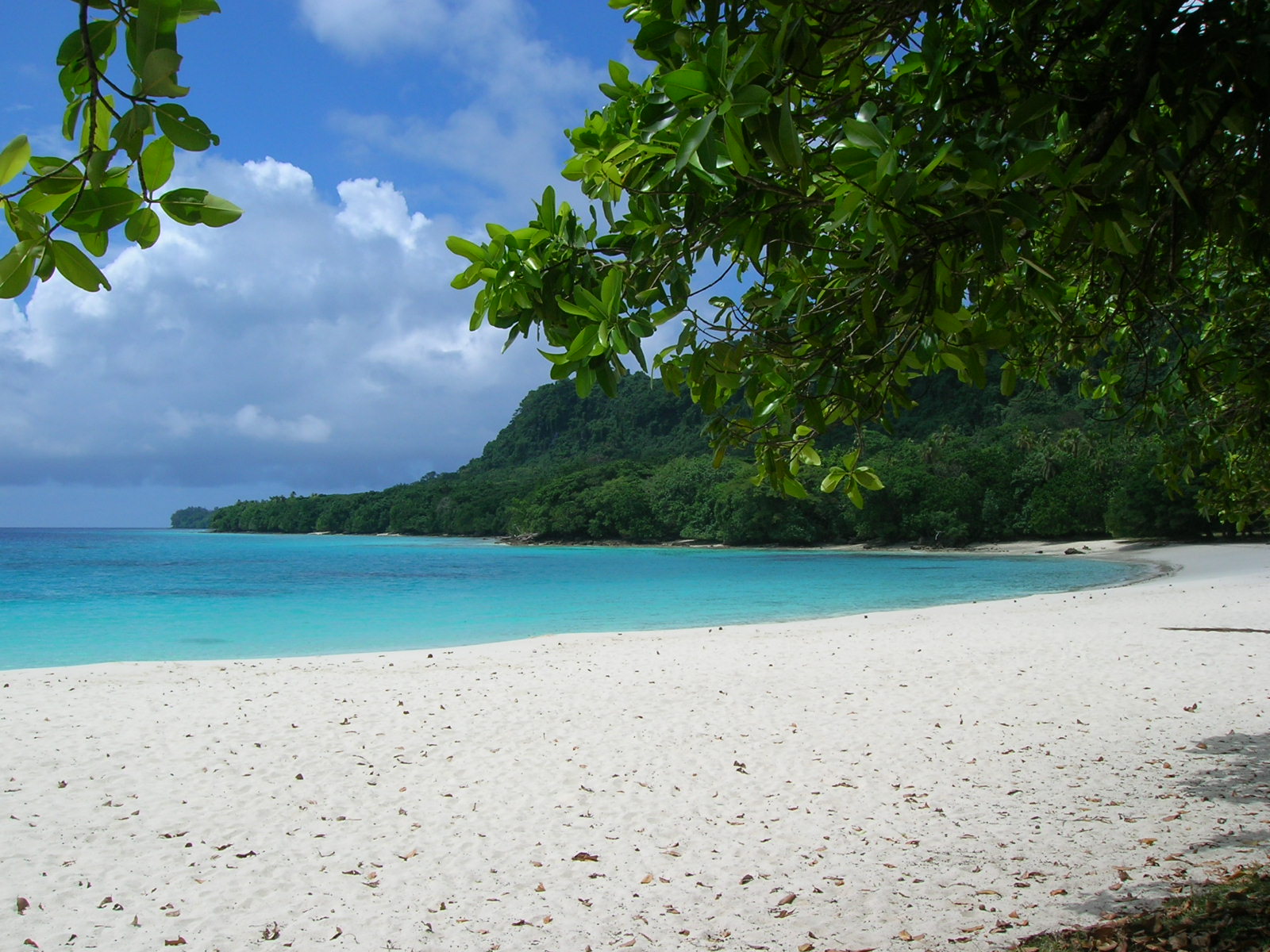|
Pseudunela Eirene
''Pseudunela'' is a genus of minute sea slugs, acochlidians, shell-less marine or temporary brackish or brackish gastropod mollusks in the clade Acochlidiacea. ''Pseudunela'' is the only genus in the family Pseudunelidae. ''Pseudunela'' is the type genus of the family Pseudunelidae. Taxonomy Pseudunelidae was placed within the superfamily Strubellioidea in the taxonomy of Bouchet & Rocroi (2005). Pseudunelidae was subsequently placed within the (unranked) Hedylopsacea by Schrödl & Neusser (2010).Schrödl M. & Neusser T. P. (2010). "Towards a phylogeny and evolution of Acochlidia (Mollusca: Gastropoda: Opisthobranchia)". ''Zoological Journal of the Linnean Society'' 158: 124-154. . Species These are the different species in the genus ''Pseudunela'': * ''Pseudunela cornuta'' (Challis, 1970) - type species of the genus ''Pseudunela'', marine and temporary brackish * '' Pseudunela eirene'' Wawra, 1988 - The description of ''Pseudunela eirene'' is brief and based on a single ... [...More Info...] [...Related Items...] OR: [Wikipedia] [Google] [Baidu] |
Pseudunela Cornuta
''Pseudunela cornuta'' is a species of minute sea slug, an acochlidian, a shell-less marine and temporarily brackishNeusser T. P., Jörger K. M. & Schrödl M. (2011). "Cryptic Species in Tropic Sands – Interactive 3D Anatomy, Molecular Phylogeny and Evolution of Meiofaunal Pseudunelidae (Gastropoda, Acochlidia)". '' PLoS ONE'' 6(8): e23313. figure 12. . gastropod mollusk in the family Pseudunelidae. Adults are about 3 mm long and live in the spaces between sand grains. A complex interactive 3D reconstruction (a 3D visualization based on 420 paraffin histological sections) of the body of an individual of this species has been available since 2009. Taxonomy ''Pseudunela cornuta'' is the type species of the genus ''Pseudunela''. Challis, who described the species in 1970, claimed to have deposited the holotype of ''Pseudunela cornuta'', 20 paratypes and a slide with the radula of a further paratype in the Natural History Museum, London; furthermore, he cl ... [...More Info...] [...Related Items...] OR: [Wikipedia] [Google] [Baidu] |
Mollusk
Mollusca is the second-largest phylum of invertebrate animals after the Arthropoda, the members of which are known as molluscs or mollusks (). Around 85,000 extant species of molluscs are recognized. The number of fossil species is estimated between 60,000 and 100,000 additional species. The proportion of undescribed species is very high. Many taxa remain poorly studied. Molluscs are the largest marine phylum, comprising about 23% of all the named marine organisms. Numerous molluscs also live in freshwater and terrestrial habitats. They are highly diverse, not just in size and anatomical structure, but also in behaviour and habitat. The phylum is typically divided into 7 or 8 taxonomic classes, of which two are entirely extinct. Cephalopod molluscs, such as squid, cuttlefish, and octopuses, are among the most neurologically advanced of all invertebrates—and either the giant squid or the colossal squid is the largest known invertebrate species. The ... [...More Info...] [...Related Items...] OR: [Wikipedia] [Google] [Baidu] |
16S Ribosomal RNA
16 S ribosomal RNA (or 16 S rRNA) is the RNA component of the 30S subunit of a prokaryotic ribosome ( SSU rRNA). It binds to the Shine-Dalgarno sequence and provides most of the SSU structure. The genes coding for it are referred to as 16S rRNA gene and are used in reconstructing phylogenies, due to the slow rates of evolution of this region of the gene. Carl Woese and George E. Fox were two of the people who pioneered the use of 16S rRNA in phylogenetics in 1977. Multiple sequences of the 16S rRNA gene can exist within a single bacterium. Functions * Like the large (23S) ribosomal RNA, it has a structural role, acting as a scaffold defining the positions of the ribosomal proteins. * The 3-end contains the anti- Shine-Dalgarno sequence, which binds upstream to the AUG start codon on the mRNA. The 3-end of 16S RNA binds to the proteins S1 and S21 which are known to be involved in initiation of protein synthesis * Interacts with 23S, aiding in the binding of the two ribo ... [...More Info...] [...Related Items...] OR: [Wikipedia] [Google] [Baidu] |
18S Ribosomal RNA
18S ribosomal RNA (abbreviated 18S rRNA) is a part of the ribosomal RNA. The S in 18S represents Svedberg units. 18S rRNA is an SSU rRNA, a component of the eukaryotic ribosomal small subunit (40S). 18S rRNA is the structural RNA for the small component of eukaryotic cytoplasmic ribosomes, and thus one of the basic components of all eukaryotic cells. 18S rRNA is the eukaryotic cytosolic homologue of 16S ribosomal RNA in prokaryotes and plastids. 18S rRNA is also a homologue of 12S ribosomal RNA in mitochondria. The genes coding for 18S rRNA are referred to as 18S rRNA genes. Sequence data from these genes is widely used in molecular analysis to reconstruct the evolutionary history of organisms, especially in vertebrates, as its slow evolutionary rate makes it suitable to reconstruct ancient divergences. Uses in phylogeny The small subunit (SSU) 18S rRNA gene is one of the most frequently used genes in phylogenetic studies and an important marker for random target polymerase ... [...More Info...] [...Related Items...] OR: [Wikipedia] [Google] [Baidu] |
Cladogram
A cladogram (from Greek ''clados'' "branch" and ''gramma'' "character") is a diagram used in cladistics to show relations among organisms. A cladogram is not, however, an evolutionary tree because it does not show how ancestors are related to descendants, nor does it show how much they have changed, so many differing evolutionary trees can be consistent with the same cladogram. A cladogram uses lines that branch off in different directions ending at a clade, a group of organisms with a last common ancestor. There are many shapes of cladograms but they all have lines that branch off from other lines. The lines can be traced back to where they branch off. These branching off points represent a hypothetical ancestor (not an actual entity) which can be inferred to exhibit the traits shared among the terminal taxa above it. This hypothetical ancestor might then provide clues about the order of evolution of various features, adaptation, and other evolutionary narratives about an ... [...More Info...] [...Related Items...] OR: [Wikipedia] [Google] [Baidu] |
Pseudunela Viatoris
''Pseudunela viatoris'' is a species of sea slug, an acochlidian, a shell-less marine gastropod mollusk in the family Pseudunelidae. The specific name ''viatoris'' is after the Latin word “viator” (engl. pilgrim/voyager) according to its supposed ability to travel over long distances. Distribution ''Pseudunela viatoris'' is known from Viti Levu, Fiji and Gili Lawa Laut, Indonesia. The type locality is Fiji, Viti Levu, Laucala Bay, Nukumbutho Island, GPS: 18°10.47′S, 178°28.34′E. Description The body size of living specimens of ''Pseudunela viatoris'' is 3–4 mm. The body is divided into an anterior head-foot complex and a posterior elongated visceral hump. The paired labial tentacles are broad at the base and taper to the end. The rhinophores are tapered and shorter and thinner than the labial tentacles. The densely ciliated foot is as broad as the anterior head-foot complex and extends about one third of the elongated visceral hump. The heart bulb is vi ... [...More Info...] [...Related Items...] OR: [Wikipedia] [Google] [Baidu] |
Pseudunela Marteli
''Pseudunela marteli'' is a species of sea slug, an acochlidian, a shell-less marine gastropod mollusk in the family Pseudunelidae. The specific name ''marteli'' is in honour of author's "big-hearted friend and colleague" biologist Martin “Martl” Heß from Ludwig Maximilian University of Munich, because the species has a large heart-bulb. Distribution ''Pseudunela marteli'' is known from Guadalcanal, Solomon Islands and Oyster Island, Vanuatu. The type locality is beach of “Art Gallery”, Honiara, Guadalcanal, Solomon Islands. Description External morphology and anatomy of ''Pseudunela marteli'' is the same as in '' Pseudunela viatoris'' with the following exceptions: Colour of digestive gland is greenish or orange-brownish. Eyes (30–35 µm) are pigmented and well visible externally. Foot length is up to half of the visceral hump. Subepidermal spicules are more abundant in cephalic tentacles, foot and visceral hump. digestive system: the radula formula i ... [...More Info...] [...Related Items...] OR: [Wikipedia] [Google] [Baidu] |
Zoosystema
''Zoosystema'' is a peer-reviewed scientific journal published by the National Museum of Natural History, France (''Muséum national d'histoire naturelle''), covering research in animal biodiversity. Specific subjects within the journal's scope include comparative, functional and evolutionary morphology, phylogeny, biogeography, taxonomy and nomenclature, among others. Zoosystema publishes articles in English and French. Indexing The journal is abstracted and indexed by Current Contents, Biological Abstracts, ASFA ( Aquatic Sciences and Fisheries Abstracts), Pascal, Zoological Record, Journal Citation Index Expanded (SciSearch®) and Scopus Scopus is Elsevier's abstract and citation database launched in 2004. Scopus covers nearly 36,377 titles (22,794 active titles and 13,583 inactive titles) from approximately 11,678 publishers, of which 34,346 are peer-reviewed journals in top-l .... References {{reflist Zoology journals Animal science journals Open access journals ... [...More Info...] [...Related Items...] OR: [Wikipedia] [Google] [Baidu] |
Espiritu Santo
Espiritu Santo (, ; ) is the largest island in the nation of Vanuatu, with an area of and a population of around 40,000 according to the 2009 census. Geography The island belongs to the archipelago of the New Hebrides in the Pacific region of Melanesia. It is in the Sanma Province of Vanuatu. The town of Luganville, on Espiritu Santo's southeast coast, is Vanuatu's second-largest settlement and the provincial capital. Roads run north and west from Luganville, but most of the island is far from the limited road network. Around Espiritu Santo lie a number of small islands and islets; among them are: Dany Island, Araki, Elephant Island, Sakao, Lataroa, Lataro, Thion, Malohu, Malwepe, Malvapevu, Malparavu, Maltinerava, Oyster Island, Tangoa, and Bokissa. Vanuatu's highest peak is the 1879 metre (6165 foot) Mount Tabwemasana in west-central Espiritu Santo. History A Spanish expedition of three ships, led by Portuguese explorer Pedro Fernandes de Queir ... [...More Info...] [...Related Items...] OR: [Wikipedia] [Google] [Baidu] |
Vanuatu
Vanuatu ( or ; ), officially the Republic of Vanuatu (french: link=no, République de Vanuatu; bi, Ripablik blong Vanuatu), is an island country located in the South Pacific Ocean. The archipelago, which is of volcanic origin, is east of northern Australia, northeast of New Caledonia, east of New Guinea, southeast of the Solomon Islands, and west of Fiji. Vanuatu was first inhabited by Melanesian people. The first Europeans to visit the islands were a Spanish expedition led by Portuguese navigator Fernandes de Queirós, who arrived on the largest island, Espíritu Santo, in 1606. Queirós claimed the archipelago for Spain, as part of the colonial Spanish East Indies, and named it . In the 1880s, France and the United Kingdom claimed parts of the archipelago, and in 1906, they agreed on a framework for jointly managing the archipelago as the New Hebrides through an Anglo-French condominium. An independence movement arose in the 1970s, and the Republic of Vanuatu wa ... [...More Info...] [...Related Items...] OR: [Wikipedia] [Google] [Baidu] |
Pseudunela Espiritusanta
''Pseudunela espiritusanta'' is a species of sea slug, an acochlidian, a shell-less marine gastropod mollusk in the family Pseudunelidae. Its specific name is a reference to Espiritu Santo Island in Vanuatu, where it was found. This species, from Espiritu Santo Island in Vanuatu, lives in brackish water. The other two species in the genus ''Pseudunela'' are fully marine Marine is an adjective meaning of or pertaining to the sea or ocean. Marine or marines may refer to: Ocean * Maritime (other) * Marine art * Marine biology * Marine debris * Marine habitats * Marine life * Marine pollution Military * .... References Pseudunelidae Gastropods described in 2009 {{Heterobranchia-stub ... [...More Info...] [...Related Items...] OR: [Wikipedia] [Google] [Baidu] |





